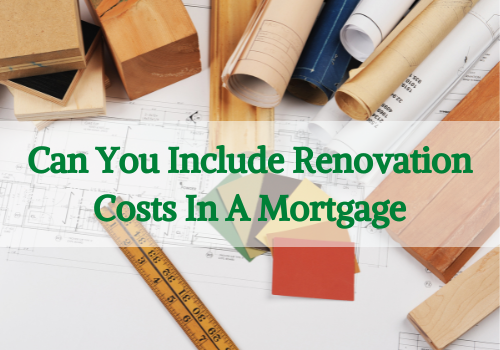Both purchasers and homeowners sometimes question if they can add renovation costs to their mortgage when buying a fixer-upper or remodeling an existing house. On the one hand, doing so results in a single loan and a single monthly payment, but it is not without its disadvantages. Can you handle renovation costs in a mortgage?
And we’ll walk you through them in this guide, from increased interest rates to extra steps that can lead to major delays. If you’re searching for a way to include remodeling costs into your mortgage, we’ll walk you through your alternatives and introduce you to RenoFi Loans, a new form of home renovation loan that could be the right fit for you.
Renovation mortgages are government-sponsored loans that allow you to finance the cost of buying (or refinancing) and repairing a fixer-upper or home in need of repair all in one loan depending on the property’s after-renovation valuation.
Loans for Construction
While these loans are usually meant for the construction of a home from the ground up, they have frequently been considered an alternative because they allow you to borrow based on a property’s future value. Southern Belt Constructions are the best contractor in Houston.
Refinance with a Cash-Out Option
Homeowners with available equity can refinance their mortgage to cover the expense of repairs, but this will usually result in a higher interest rate and higher monthly payments. It’s crucial to note, however, that just because these options are available doesn’t mean they’re the ideal approach to fund a remodel.
For the simple reason that they don’t have enough cash to fund the projects they want to start up front, don’t have enough equity to take out a home equity loan or line of credit, and don’t want to take out a high-interest personal loan, homeowners and homebuyers often jump right into looking at options that allow these costs to be added onto a mortgage. However, you must carefully analyze your options and choose the path that is best for you. And that involves knowing how the various alternatives affect your borrowing power as well as your monthly payments.
Why Do Homeowners and Buyers Want to Include Renovation Costs in Their Mortgage
A home improvement project can be costly. In fact, it’s not uncommon for an entire wishlist of projects to cost $100k or more, necessitating the exploration of financing solutions to meet the expense. But, before we get into the various possibilities, let’s take a look at why both homebuyers and homeowners choose to add renovation costs to their mortgage rather than taking out a second mortgage, such as a home equity loan or home equity line of credit, or a personal loan.
To do so, let’s be clear about the many contexts in which this alternative is being investigated:
Homebuyers: You’ve located a fixer-upper with a lot of potential, but you’ll need to borrow money to restore it as well as the money to buy it so you can convert it into your dream home.
Homeowners: You like where you live, but there are a few projects on your wish list that you’d like to get started on. You need to find the best way to finance your remodel, whether it’s your bathroom, kitchen, or a larger project like the construction of an inground pool or an ADU, and you’re looking for the finest alternative to make this happen.
But, rather than taking out a separate loan, why is it so common to want to add renovation fees to a mortgage?
This can be broken down into a few common causes:
There is no equity
When you don’t have any equity in your home because you haven’t yet purchased it or have only recently done so, it’s easy to believe that the only way to get the money you need is to roll your renovation costs into your mortgage. You do, however, have another option: RenoFi Loans. These will be introduced to you shortly.
A Single Loan with a Single Payment
Another popular motivation for combining renovation costs and mortgage payments is to avoid having to take out multiple loans and make a single monthly payment. If you’re a homebuyer, this usually entails attempting to avoid extra closing charges and fees.
Financing alternatives that combine these expenditures into a single loan, on the other hand, frequently have a higher interest rate than a mortgage that solely covers the property’s cost.
Interest Rates are Lower
It’s not uncommon for homeowners to use a high-interest personal loan or credit card to fund a makeover, but these often come with frighteningly high-interest rates. In actuality, a personal loan will have an interest rate of between 8% and 15%, and a credit card will have an interest rate of much greater.
As a result, your monthly payments will be greater. Mortgage interest rates are substantially lower, which can make borrowing more reasonable and help you keep your monthly payments as low as possible.
Southern Belt Remodeling are general contractors in Houston. Do you want to know about can home renovations be tax deductible? For more information, call (713) 930-0003.


No Comments
Be the first to start a conversation